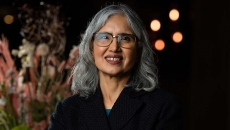In the fascinating tapestry of Sikh history, Bhupinder Singh Bance, known as Peter Bance, emerges as a luminary figure whose passion for preserving the legacy of Maharajah Duleep Singh, and beyond, has left an indelible mark on the historical landscape of Sikhism, Punjab, and beyond. A renowned Sikh historian, independent researcher, and antiquarian, Bance's journey into the realms of Sikh history is as unconventional as it is compelling. Born into a family that moved to Britain in the 1930s, Bance's initial foray into the world of academia saw him as a marketing student rather than a history scholar. However, fate had a different path laid out for him. It was during a visit to Thetford that the seeds of curiosity were sown as he stumbled upon the samadhi of Maharaja Duleep Singh, the last sovereign ruler of the Sikh Empire.
![]()
Intrigued by this chance encounter, Bance initiated a quest to unravel the lesser-known aspects of Duleep Singh's life, particularly focusing on his descendants. This quest became the catalyst for the creation of a vast collection of artifacts and memorabilia associated with the Maharajah and his family. Bance’s newfound passion prompted him to place advertisements in local papers, seeking information about Maharajah Duleep Singh's children. The response was overwhelming – 400 replies flooded in, unveiling a treasure trove of artifacts and personal stories. Bance's journey became a personal connection to his roots, a way of staying tethered to his Indian heritage, despite never having set foot in India at that point.
With a collection of such magnitude, Bance became a custodian of history, showcasing his treasures globally, from the Victoria & Albert Museum to The British Museum and the Bard Graduate Centre in New York. He then embarked on a journey of research that would redefine Sikh historiography. His debut book, The Duleep Singhs: Photograph Album of Queen Victoria's Maharajah, released in 2004, marked the inception of his literary contributions, paving the way for a series of monumental works. Sovereign, Squire and Rebel: Maharajah Duleep Singh & the Heirs of a Lost Kingdom and Sikhs in Britain: 150 Years of Photography are among his written endeavors that not only encapsulate the historical narrative but also delve into the broader context of Sikh history. Bance's writings explore the establishment of Sikh temples in the UK, the migration of Sikhs, and the multifaceted tapestry of their experiences.

Beyond the written word, Bance's impact extends into the realm of broadcasting. His appearances in various BBC programs, such as Britain's Maharajah and The Stolen Maharajah: Britain's Indian Royal amplify his commitment to disseminating Sikh history to a wider audience. Through the medium of television, Bance brings history to life, making it accessible and engaging for diverse audiences.
The passionate historian has also played a pivotal role in contributing to The Black Prince, a film featuring Satinder Sartaj. Collaborating closely, Sartaj and Bance worked on shaping the underlying narrative of the film, an experience that fostered a lasting friendship. Presently, Bance is engaged in a new venture with Raj Babbar's daughter, Kajri Babbar, who is working on a film, Lioness, revolving around Sophia Duleep Singh, Maharaja Duleep Singh's daughter, and the goddaughter of Queen Victoria. The ensemble cast, featuring Aditi Rao Hydari, Leon Ockenden, Edmund Kingsley, Archana Puran Singh, Raj Babbar, Jaaved Jaaferi, Prateik Patil Babbar, Paige Sandhu, and Anup Soni, is set to commence shooting in the upcoming spring season.

In fact, one remarkable artifact in Bance's current collection is the sari of Sophia Duleep Singh. This saffron garment gained prominence during an event attended by Queen Elizabeth, underscoring the importance of Duleep Singh's family in modern British history. Bance's extraordinary collection also includes Maharaja Duleep Singh's intimate possessions such as his personal hunting shotgun, distinctive jacket, and the profoundly revealing pages of his personal diary, offering a tangible connection to the life and legacy of this pivotal historical figure.
Bance’s work has not only immersed him in the rich tapestry of Sikh history within the UK but has also extended his exploration into India, where Bance's interactions with prominent figures like the Maharajah of Kapurthala and Maharajah of Patiala have enriched his historical understanding. Talks across India have allowed him to share his work and also connect with individuals who had personal ties to Duleep Singh. Bance has also done extensive work researching history in Pakistan. Addressing the myth surrounding Pakistani stamps on visas, Bance sheds light on the need for Sikh tourism, dispelling notions that hinder travel to historical sites. His insights highlight the importance of increasing awareness and tourism in Pakistan to ensure the preservation of Sikh monuments. “Since the partition, we have lost more than half of Sikh history. Conservatively speaking, this translates to well over 100 monuments that have been destroyed or eroded at the hands of neglect. Of what’s left, 80% of Sikh history is currently in Pakistan, and in the next 50 years, there may be very little remaining. We catalog what we can, but it still hurts to see these sites practically rotting.”

Bance further details that many historic gurdwaras are situated in rural areas devoid of Sikh populations, making renovations seem impractical. While there is a significant need for substantial Sikh tourism, the current demand appears insufficient. Even the Kartarpur Corridor, once bustling, now witnesses a decline in activity, leading to the closure of shops in the vicinity. Bridging the generational gap in understanding shared history involves Bance's advocacy for younger generations to visit historical sites in Pakistan. Social media's role in fostering interest is evident, as Sikh visitors have increased in the last five years. Bance's anecdotes, shared online, receive hundreds of messages, showcasing the power of digital platforms in connecting people to their heritage. The challenges of neglect and destruction faced by Sikh monuments after partition underscore the importance of creating awareness. Bance's plea for government involvement, driven by tourism incentives, reflects a pragmatic approach to preserving these historical sites for future generations.
Undoubtedly, the significance of Bance's work goes beyond scholarly pursuits; it resonates with a personal connection to his roots. His extensive collection of memorabilia related to Maharajah Duleep Singh serves as a bridge between the past and present, linking generations and preserving a rich cultural heritage. In essence, Bance's journey unfolds as a testament to the power of passion, determination, and the unwavering commitment to safeguarding Sikh history and Punjab’s history. His efforts transcend borders, bringing to light not just the historical narrative but the human stories that breathe life into the past, enriching our collective understanding of the world.






